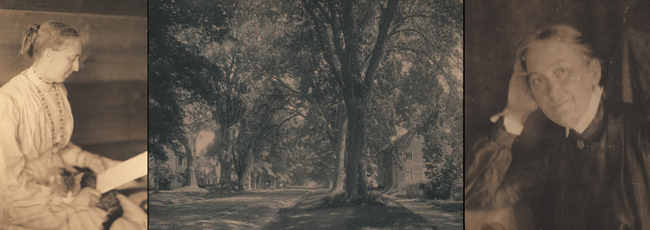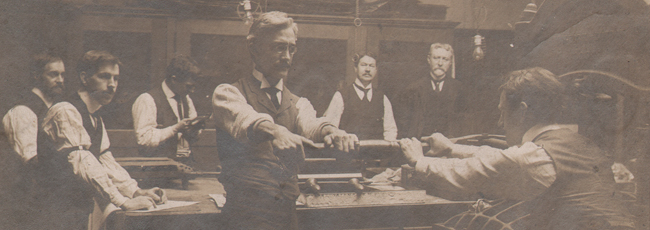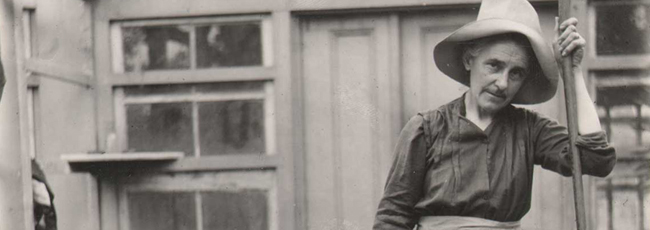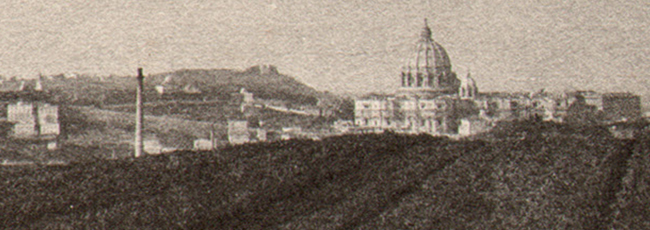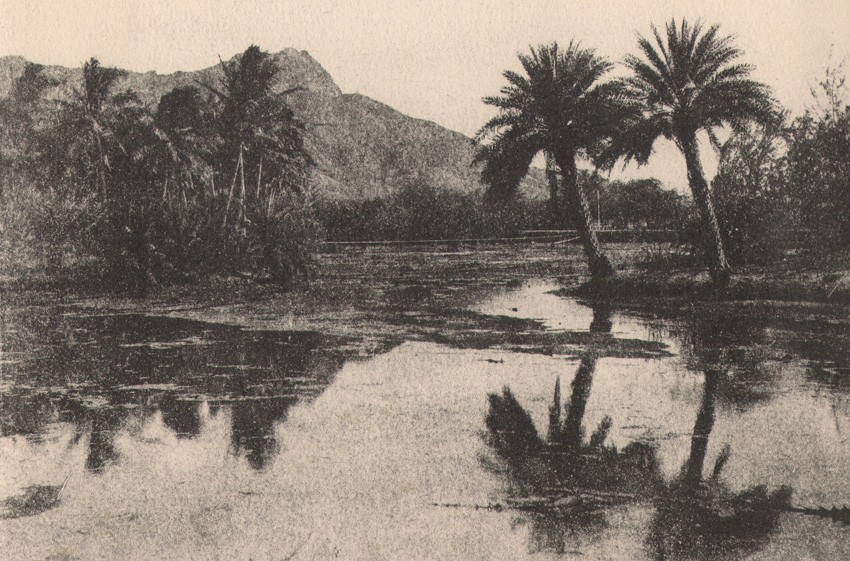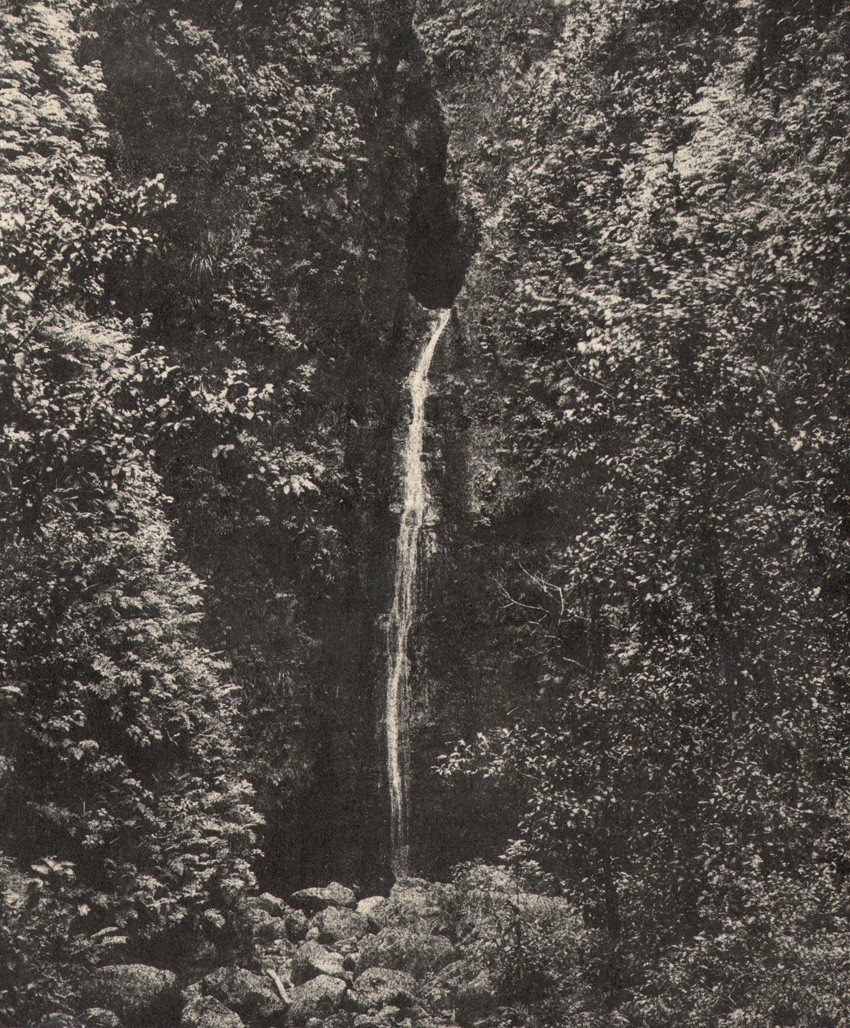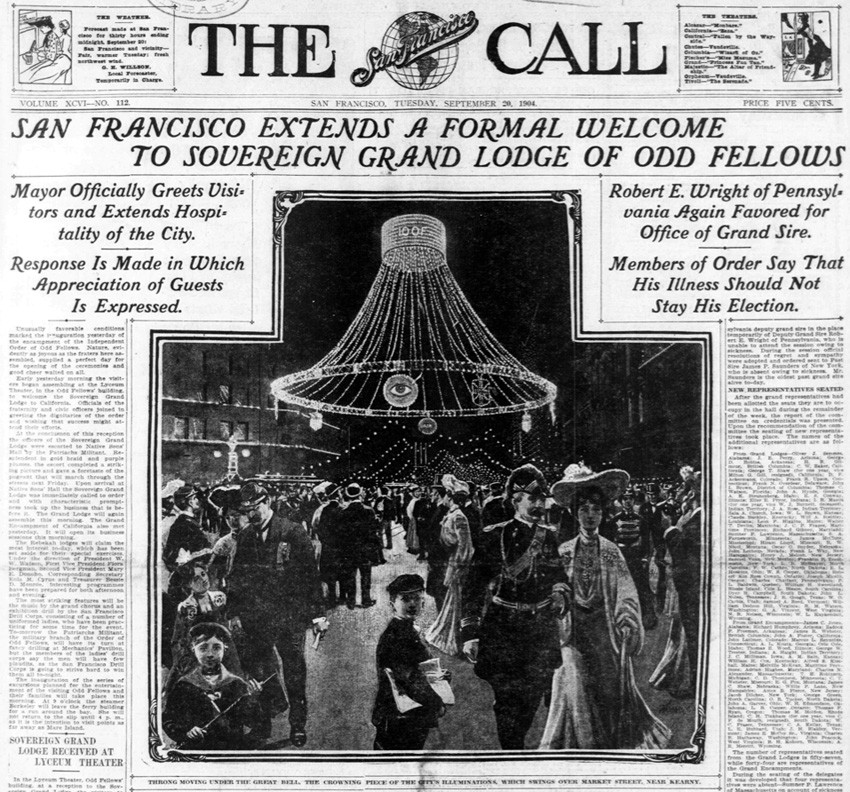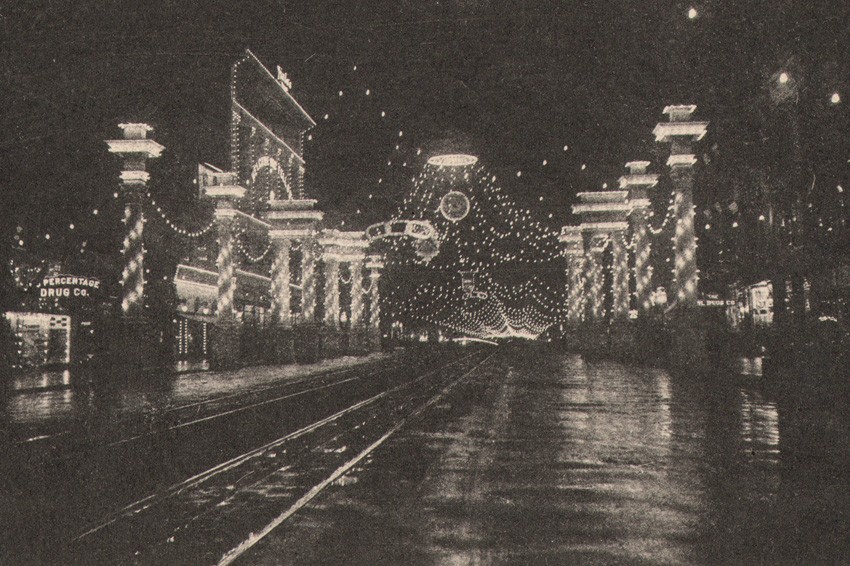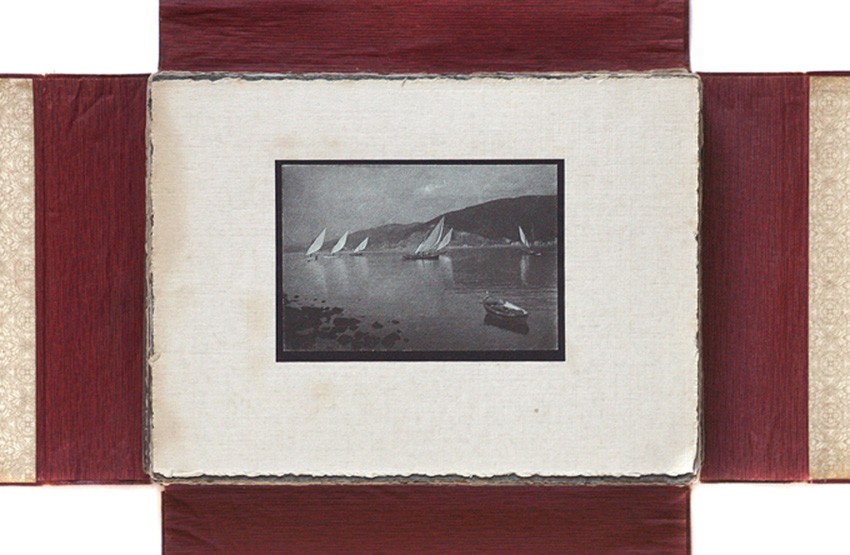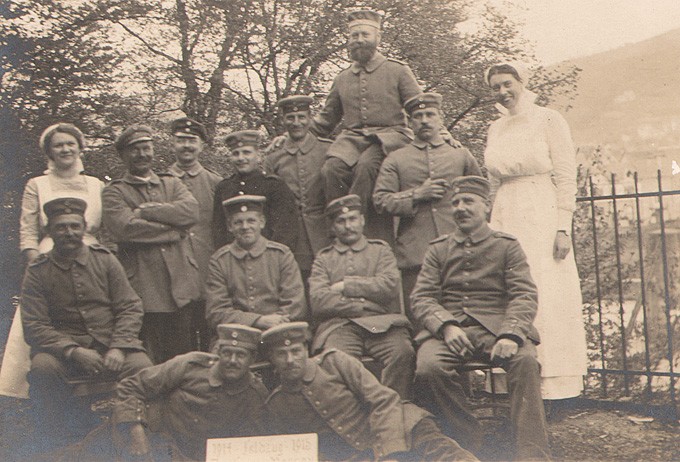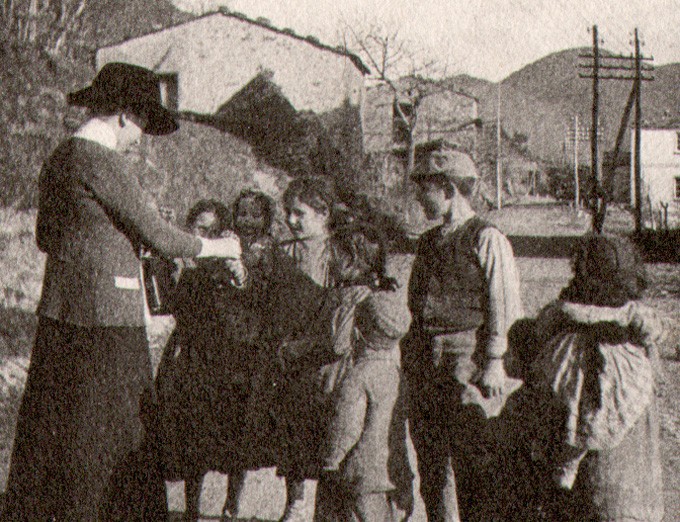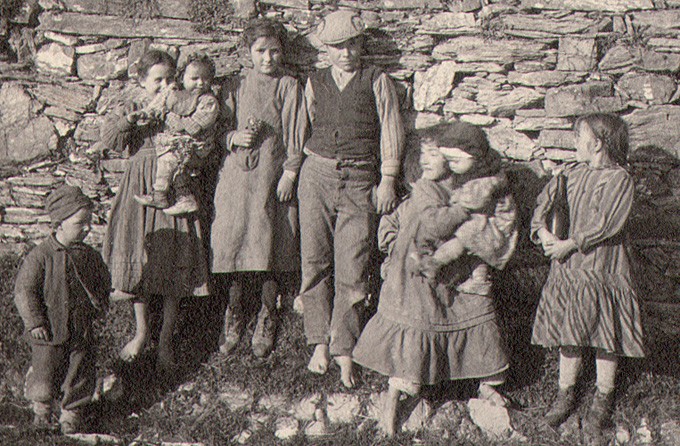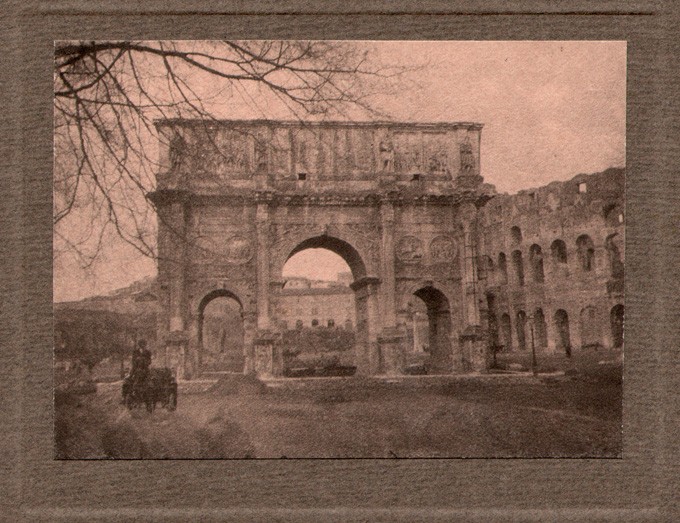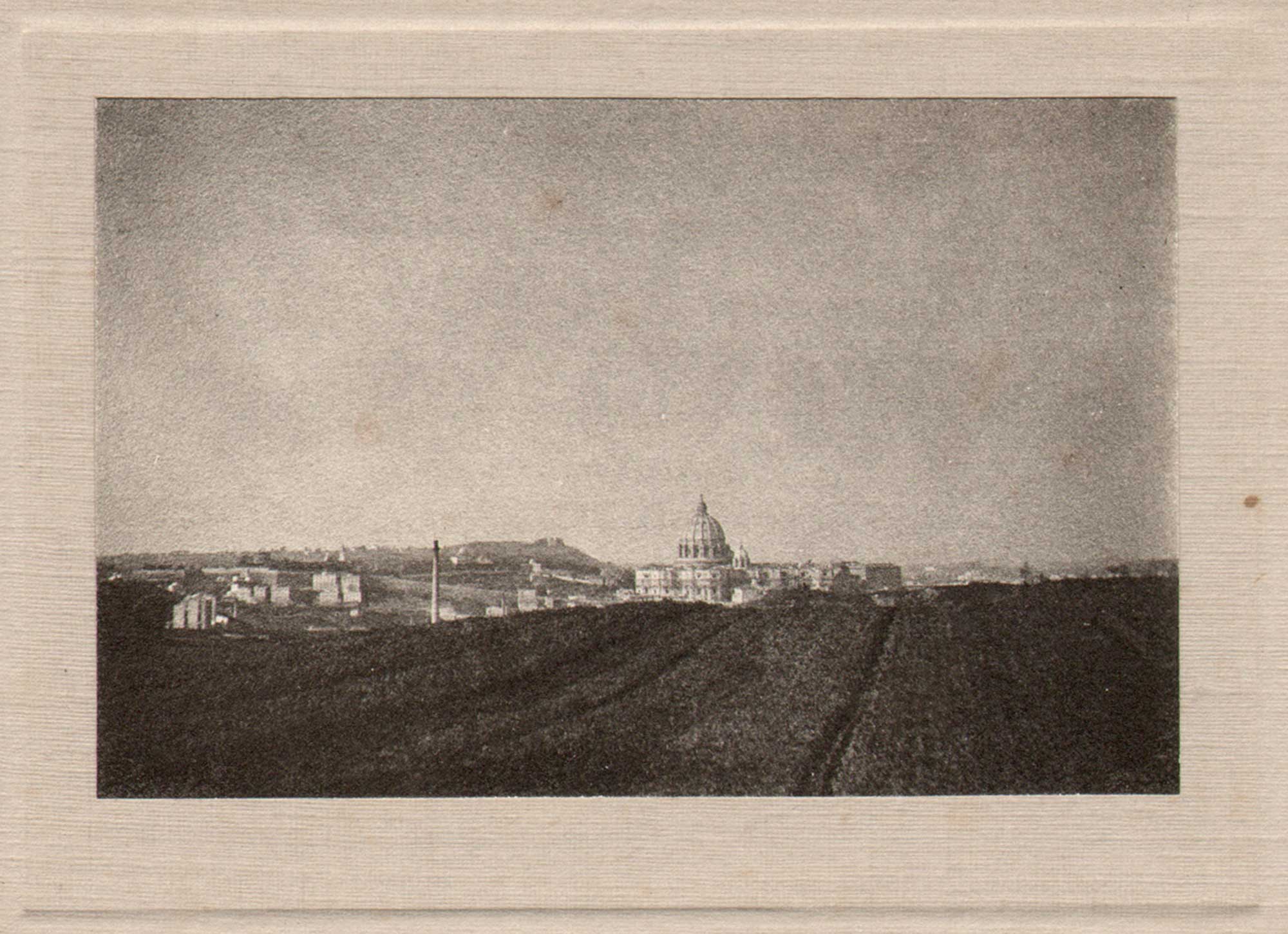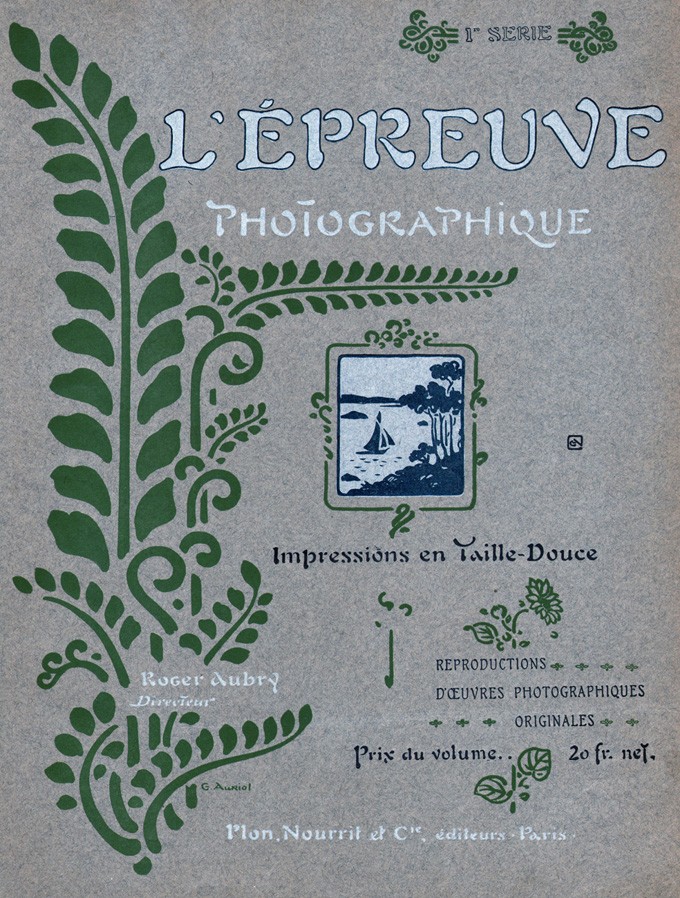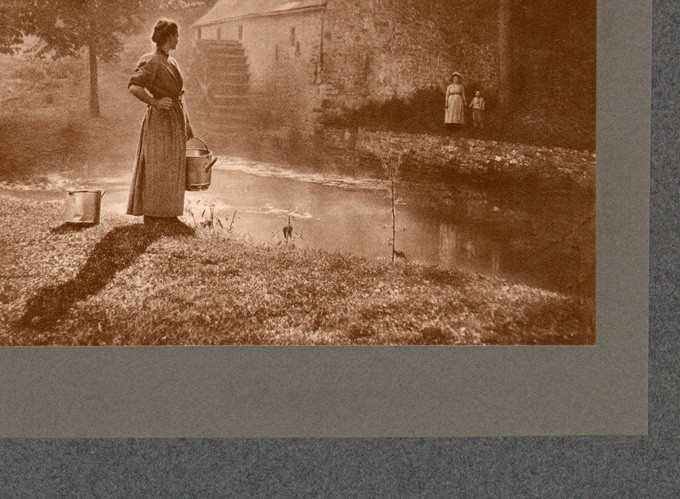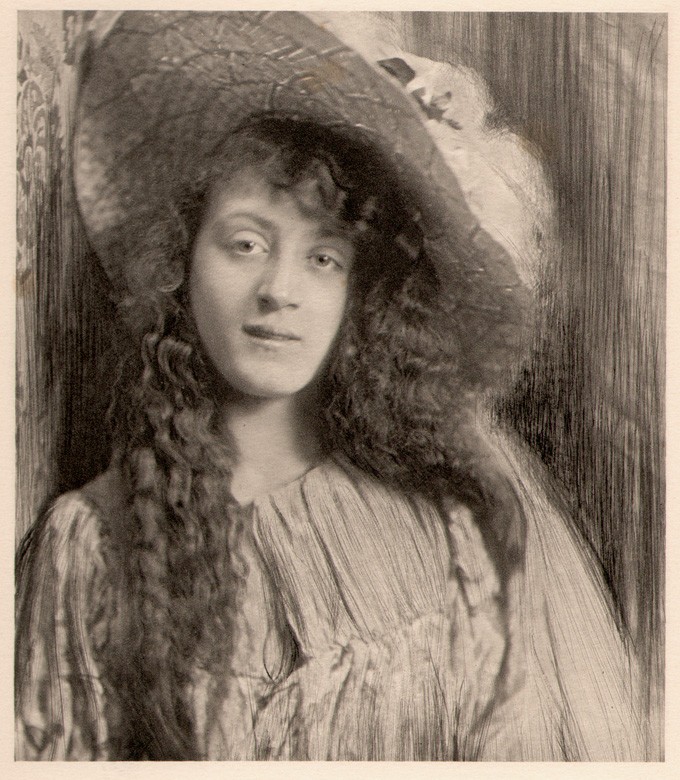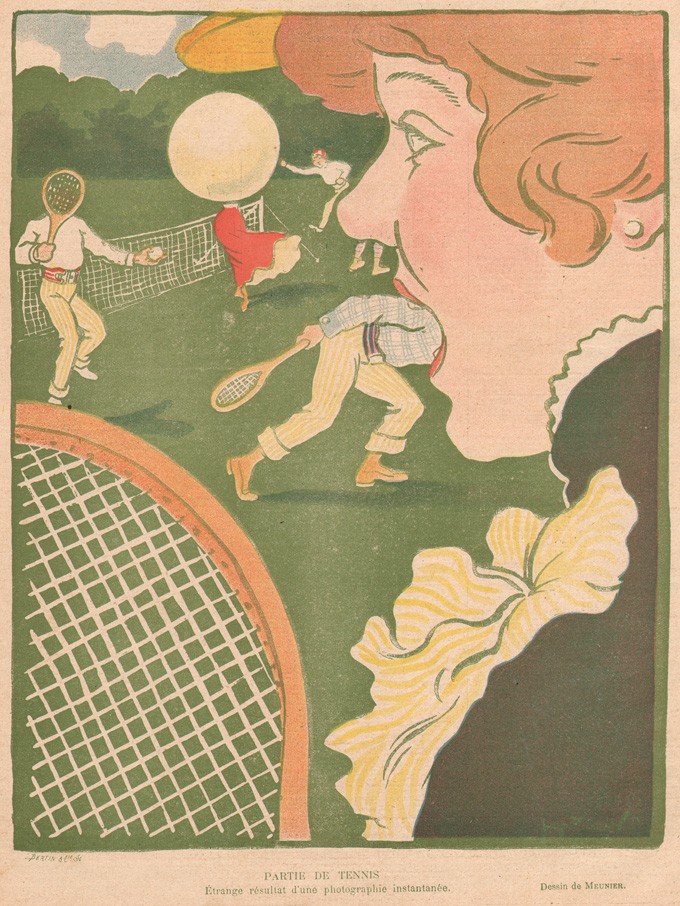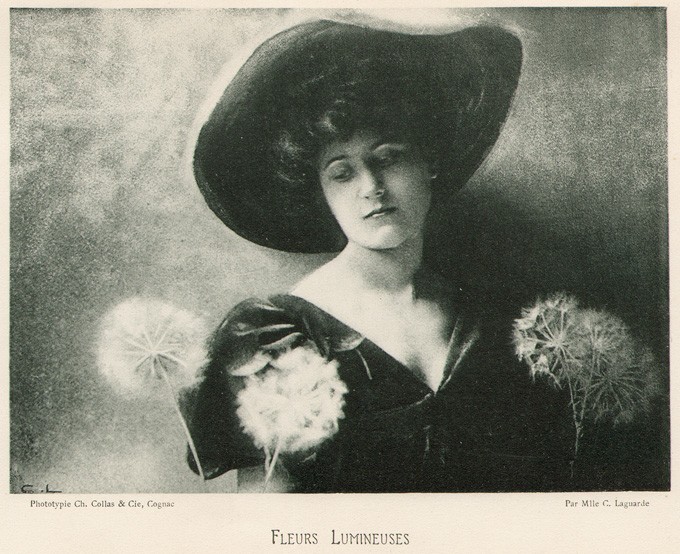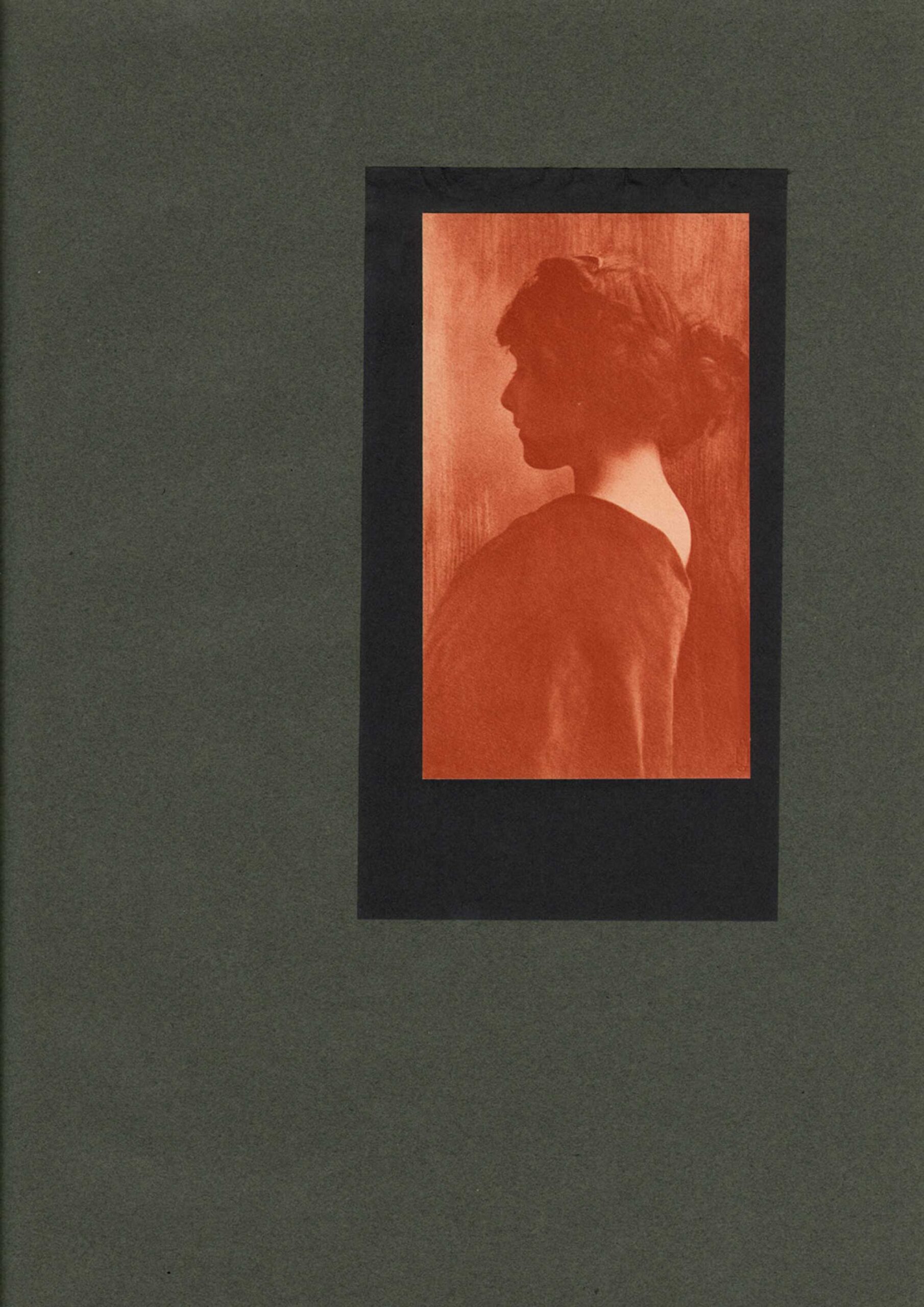Is logical. And I’ll tell you why. Because the Boraxologist told me so. How else to explain the 1906 publication of a small book featuring the work of American Photo-Secession founder members Clarence White and Gertrude Käsebier as a way to convince folks to open new savings accounts at a bank in Rochester, New York?
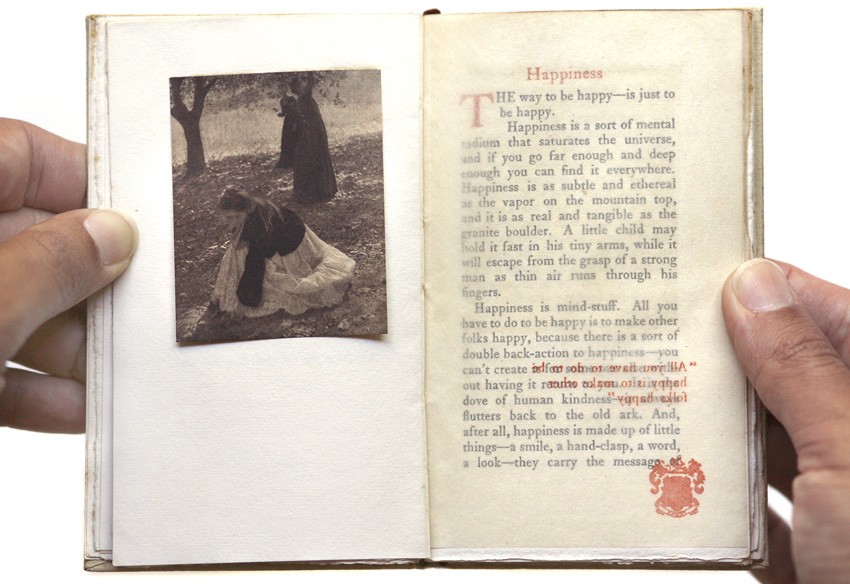
Happiness is finding the work of American Photo-Secession founder member Clarence Hudson White’s work in the tiny book “Homespun Essays” published late in 1906. Shown here is White’s photograph “The Orchard”.
I’m guessing you have no clue what I’m talking about, but if you happened to be alive in 1904 and flipping through your daily newspaper, chances are good you might have encountered a drawing of a wise old mule-named the Boraxologist—lauding the untold benefits of “20-Mule Team Brand Borax”—a water-softening agent used in the laundry. Today, Borax® is best known as a laundry “booster” and multi-purpose household cleaner. But thanks to the sayings of this mule a century ago, you may have believed the Fountain of Youth and Holy Grail were cleverly disguised in a box—humbly biding time on the general store shelf, awaiting your purchase to give new life to dirty clothes.
The mind that came up with the mule with the funny sounding name and that little book from the bank was from a gentleman by the name of Otis H. Kean. A book publisher and advertising agent by profession, Kean turned creeds and in his own words, “optimistic aphorisms” into advertising copy by the barrel. “Such things seem to please the people” he said in 1904, regarding his “wisdom” dished out as part of the borax campaign. While reading through much of his published copy in preparation for this post, the modern figure of Don Draper did cross my mind, but of course from the “kinder and gentler” era of the early 20th century. I have no doubt if Kean was given a client’s account with the challenge of selling the benefits of more snow to a group of Eskimos, he would have no hesitation with the challenge. In carrying this mindset forward, Kean’s contact with cutting edge artistic photography by Clarence White and Gertrude Käsebier was simply the opportunity to consummate a marriage: photographs as visual aphorisms if you will. Why just confine their work to a gallery he may have thought, when it could be the perfect foil in promoting the virtues of opening a new savings account at the just opened Rochester Trust & Safe Deposit Company’s new building?
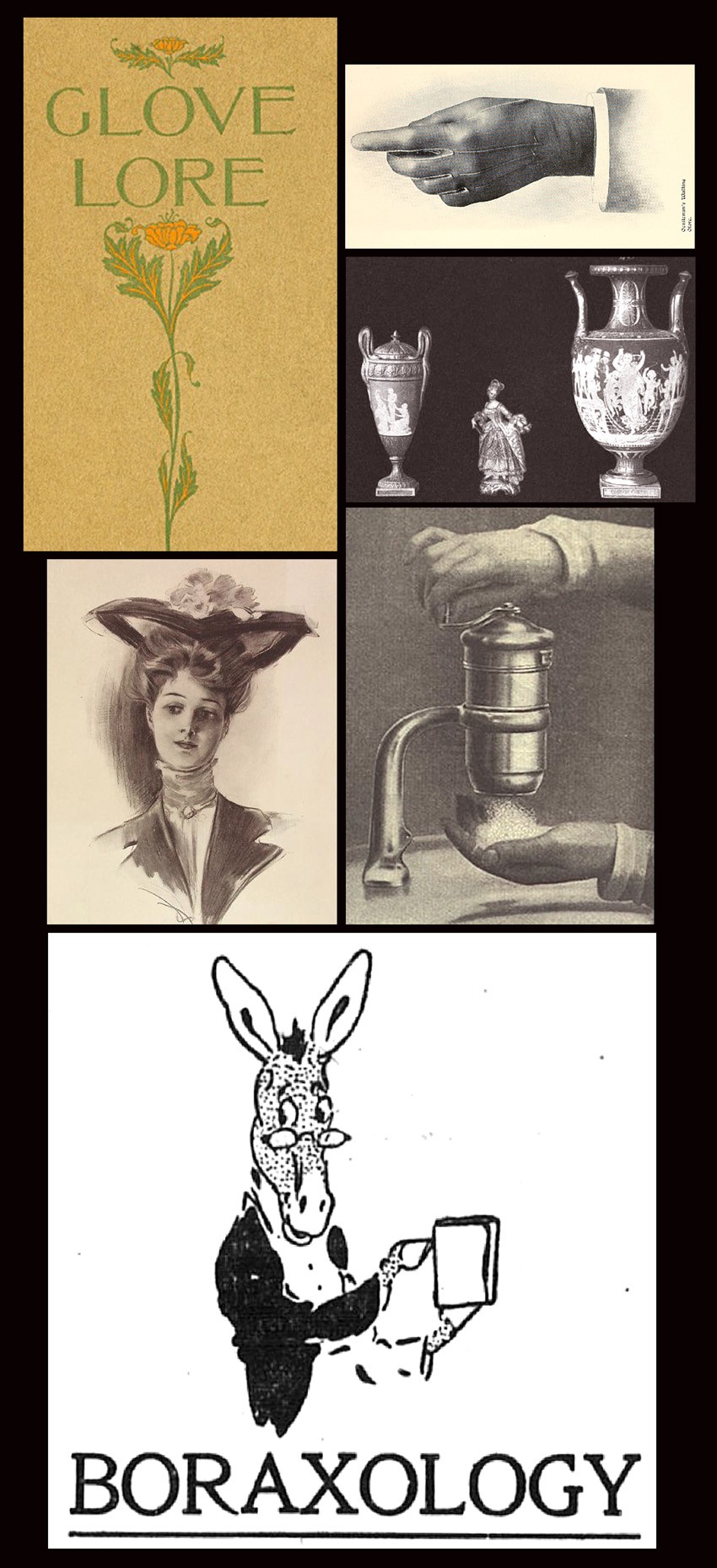
Examples of specialized publications and advertising work published and carried out by the firm of Otis H. Kean from 1897-1906: clockwise: brochure cover-“Glove Lore”-1897; gentleman’s walking glove from Glove Lore; photograph of Dresden porcelain from book “The Art of Giving”-1902; advertising photograph showing Hygienic Soap Granulator in use from McClure’s-1906; newspaper caricature advertisement of the “Boraxologist”, a mule-1904; American Girl Picture No. 4 from Pacific Coast Borax Co. advertising campaign-1904.
Boraxologically speaking, how exactly did Mr. Kean persuade or convince this aforementioned gallery owner, none other than Alfred Stieglitz himself, that using White’s and Käsebier’s work was in his best interest? A moot point perhaps, because Kean succeeded in issuing this tiny book, titling it “Homespun Essays—Everyday Thoughts About Everyday Life”, which featured their work. Of course, their encounter may never have happened, but if it did, a conversation between this wisdom spouting advertising man and fierce guardian of the American Photo-Secession would have been amusing to say the least.
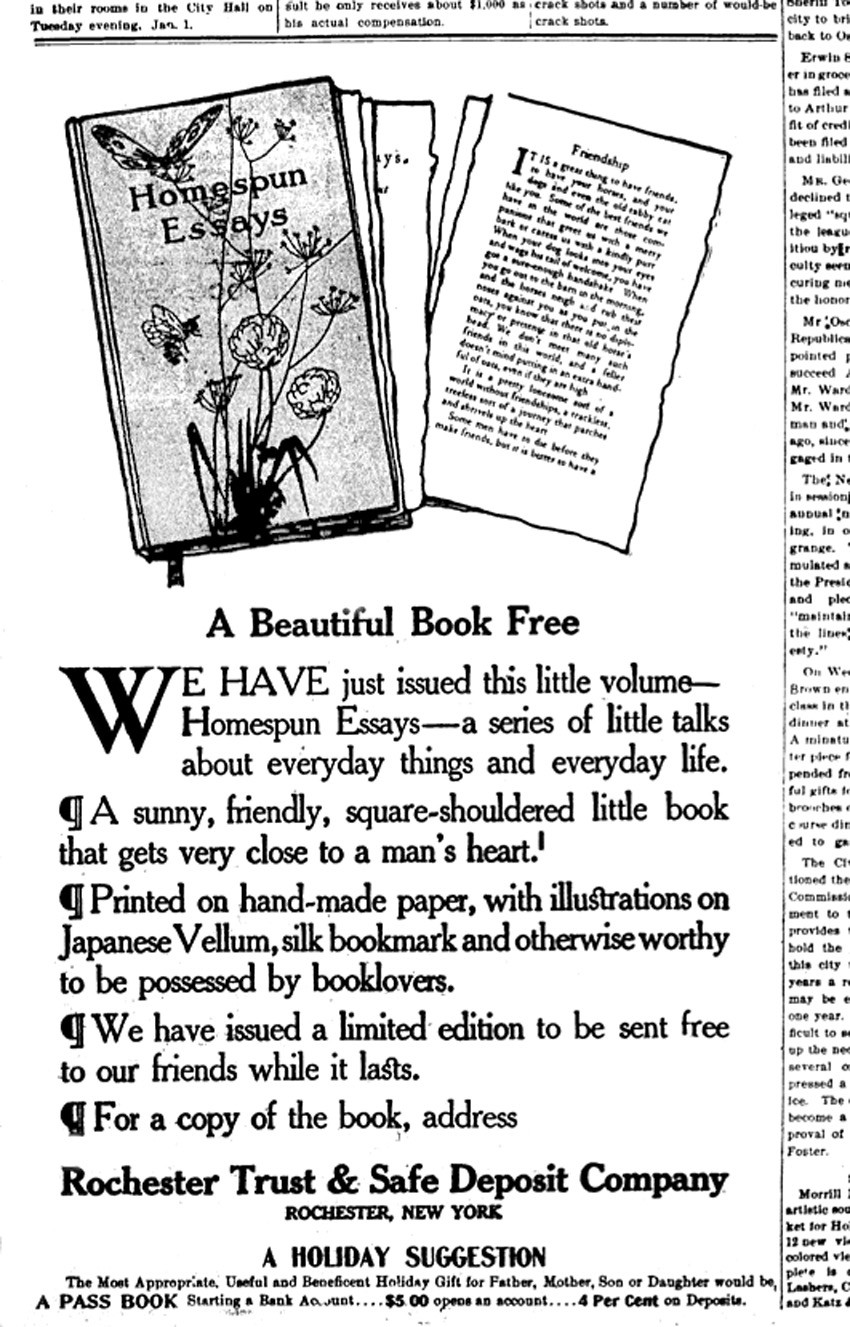
This advertisement for the free book “Homespun Essays”, arranged and printed by Otis H. Kean, was placed and appeared in at least 15 newspapers in and around Rochester, New York in late December 1906 by the Rochester Trust & Safe Deposit Company. The ad was a promotion for people to open up new savings accounts at their new bank.
My own take on Kean while preparing Homespun Essays for this site is this: a perfectionist with a heart. The specialized books he published in conjunction with his business concern, the Literary Print Shop, were high-class productions and in this regard, his possible saving grace in relation to any possible dealings he may have had with Stieglitz. It wasn’t as if he was opposed to all commerce of course, but you do have to consider Stieglitz was most definitely an anomaly in the gallery world when and if Kean crossed his threshold in pursuit of “business”. This is because his well documented and self-prescribed “fight” for photography in America took the form of fierce protector and champion of White’s and Käsebier’s photography at a time when the very concept of hanging artistic photographs on gallery walls was in itself a revolutionary act. Kean’s involvement with fine printing and his possible business relationship with the Quadri-Color Printing Company in New York City—a firm responsible for the first true, four-color printing in America beginning in 1904, would have also given both a healthy respect for each other and a way to start a meaningful conversation.

The work of Clarence Hudson White and Gertrude Käsebier was one of the very first shows of artistic photography Alfred Stieglitz showed at his Little Galleries of the Photo-Secession from February 5-19, 1906. Advertising agent Otis H. Kean may have seen this show, which would have given him reason to print examples of their work in “Homespun Essays” in December of 1906. Photograph from halftone plate reproduced in Camera Work XIV: 1906.
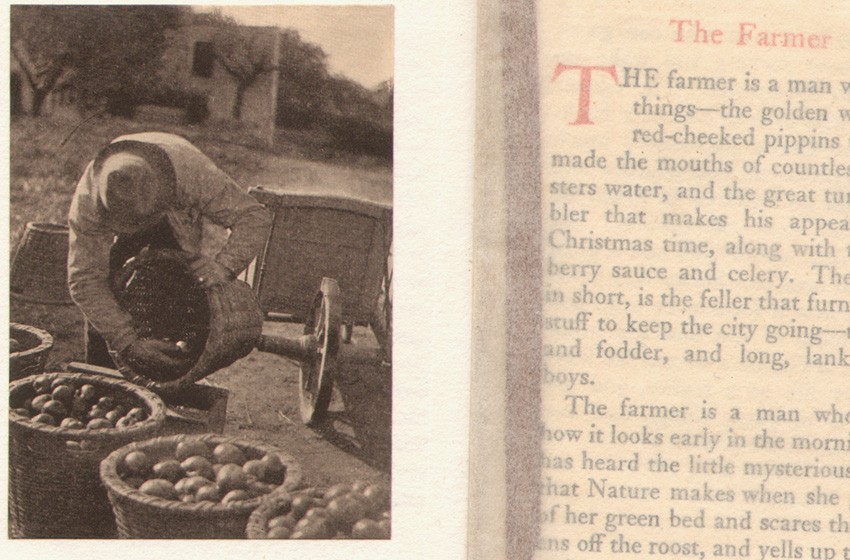
“Fruits of the Earth”: (6.4 x 4.9 cm) by Gertrude Käsebier, a multiple-color halftone, is her sole photograph appearing in the book “Homespun Essays”, accompanied by an essay written by Kean titled “The Farmer”. Printed tissue guards, an example seen here, protect all book plates, and issued with red silk bookmark seen underneath guard. The photograph was previously reproduced as a photogravure by Stieglitz in “Camera Notes” from October, 1901.
Please visit our latest opus on Homespun Essays here, and prepare yourself to be “homespun” if you decide to read the posted essays along with the photographs, where you may smile and even laugh, especially after digesting this following tidbit from the book’s publisher: “The Trust Company never dies, never absconds and is immune from those possibilities of loss that may happen to every individual.” But then again, don’t cry too much when you find out they actually paid 4% interest back then on a savings account.
